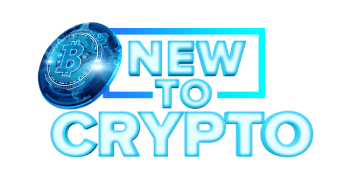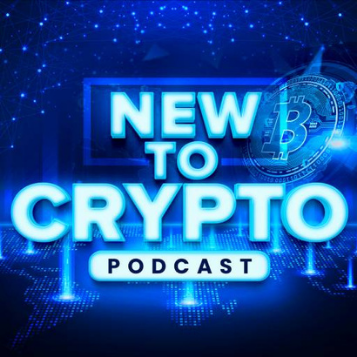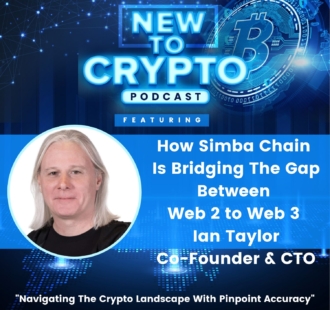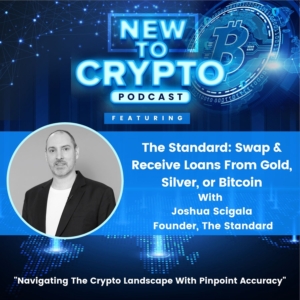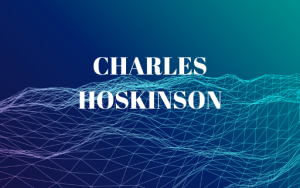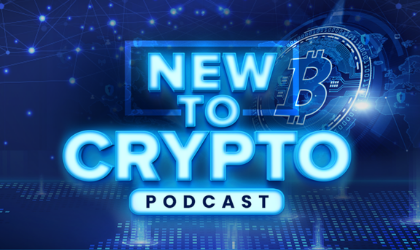SUMMARY KEYWORDS
blockchain, simba, chain, simba chain, contracts, crypto, rest api, transactions, smart contracts, deploy, data, web, call, wallet, applications, interface, connect, create, blocks
SPEAKERS
Ian Taylor, Crypto Travels Michael
Michael 00:01
Welcome to the New To Crypto Podcast designed to guide you through the crypto landscape with pinpoint accuracy created for the new and intermediate crypto investor. Join your host Crypto Travels Michael as he takes you through the different facets of getting started and succeeding in your crypto journey. New to crypto podcast brings you new episodes daily Monday through Friday with surprise bonus episodes sometimes on the weekend. Let me ask you, Are you new to crypto don’t know where to start? Are you more experienced but have questions? Then you’re in the right place. This podcast is designed for you coming at you from the trading center in the lifestyle design studio. Here’s your host Crypto Travels Michael. Brave wallet is the first secure crypto wallet built natively in a web three crypto browser, no extension required. You can store manage and grow your portfolio, get NFT’s and multi chain support. Download the brave privacy browser brave.com/newtocrypto and click on the wallet icon to get started. Hey, welcome to today’s podcast. I’m excited to share today’s episode with you. I have actually another one of the leaders from Simba chain and today is in phenomenal interview with Ian Taylor. Ian is a CTO and co founder at Simba chain. So he’s basically the technical lead, if you will. And currently in is also a full research professor at the University of Notre Dame on leave at the School of Computer Science, Engineering and computational scientist at the computing Research Center. Also previously, Ian was a full professor at Cardiff University in the UK, he has managed more than 15 research projects at Cardiff University. And Ian’s research over the last 25 years has covered a broad range of distributed computing areas. And now he specializes in blockchain machine learning, open data access, cloud computing, and all kinds of awesome things that we’re going to cover today. And Ian is also won the Naval Research Lab, the best research paper prize for several years, three different years. And he’s been part of a 20 year long collaboration with a Naval Research Lab. He has over 11,000 citations, you know, for all of you PhDs and and academics is H index is 47. Do me a favor, and welcome to the show into the podcast in man. It’s a pleasure to have you on the show
Ian 02:42
that used to be here. Thanks. Thanks for the welcome.
Michael 02:45
Absolutely. Hey, before we dive into some more technical questions about Simba, and Simba chain, can you share with our listeners just a little bit about yourself?
Ian 02:55
Yeah, absolutely. So I was born in Wales in the UK, went to Cardiff University to do a degree in computer science. And then I did a PhD in physics and music and computer science. And I got kind of grabbed by the gravitational wave group in Cardiff to focus on data acquisition system for that the geo 600 gravitational wave detector element, as some of you might recall, some years ago, they won a Nobel Prize for detecting gravitational waves. So that’s pretty cool. And then after that, I became a professor in Cardiff teach in distributed systems. And then I also around 99, I came to the US. So I was here in the US about half of my time and work for the renewable Research Lab, as you mentioned earlier, what were those for about 1518 years, something like that. And then in 2016, I joined University of Notre Dame. And actually, as soon as I joined there, a local company, a guy called John Nidek, who’s the co founder of samba he contacted University CRC Research Center and asked if any of the professor’s were interested in doing a grant with DARPA on blockchain, so I yarraka, the director of CRC offered it to me, I said, Sure, yeah, I’ll take it. So I wrote this proposal. I was actually in Europe that summer, and I was in six different countries. And I wrote a section of the proposal in each country. So as decentralized from the outset, while I was working, you know, when I was kind of understanding blockchain and reading about it, and and I loved the concept from the outset, my backgrounds in distributed computing, so so things like symmetric cryptosystems, hash codes, and all of those, all of the great stuff that happened in PTP kind of era like things like free net, which is all of those things widely and innovatively. Blockchain again, you know, captured those tools and kind of use them for to secure data and produce non reputable storage and so forth. So that was immediately interested in it. I submit a proposal that proposal was called cember. But it stood for secure messaging on a blockchain architecture originally now we changed the we kept the name which was a surprise at the beginning, but it just it was a name that stuck with people so we can got the name and now it’s simple blockchain applications. So that was kind of a bit of my background on how Simba got started that project actually, and what we learnt during that project that it was really hard to kind of stand up prototype applications. We wanted to build a secure messaging application using fabric back in 2016. Things were changing, they just bought brought in GRPC for communications, for example. So it was changing quite a lot. And we were trying to kind of stand up this demo. And it was it was quite hard. And we just realized, you know, things were changing so much having a having a consistent interface, something simple that people could use to connect to, not only one blockchain, but But several blockchains would be really valuable. And that was the premise that we started Simba chain on to make it simpler for people to use blockchain.
Michael 05:44
Fantastic. I think it’s something that was desperately needed in the space. And I also Yeah, I hear what you’re saying and touched on that, once you guys started with the DARPA project and found out how technical and how difficult it is to, to build that out as an organization and to identify that just, you know, regular enterprises and businesses, you know, needed a bridge, right, someone to help them get into web three, and Simba is born was born. And here we are, and you guys are doing some phenomenal, you know, phenomenal work in many different industries through manufacturing. And we talked with Brian about, you know, what you’re doing in Mexico with the coffee and the talks and, and the Air Force and the medical industry and all that kind of, you know, different use cases. And we actually talked with Brian about the intro to Simba blocks platform, but I wanted to take a little deeper dive with you. And if we can, if you can sort of go a little deeper about the family of plugins for web three software suites and you know, Simba chain, you can if you can kind of unpack the symbol blocks platform little more detailed. Yeah. So
Ian 06:55
I guess if I start from the platform itself, and then kind of delve into the the environments and plugins that we see. So the platform itself, there’s several tools. So the the general idea is to is to make it very simple to interface with Blockchain applications at the kind of center of that is a REST API interface, essentially, two contracts. And the way that works is we’ll take, we’ll take a contract, deploy it to a blockchain, and we’ll harvest the metadata from that contract. And we’ll use we use that to auto generate an API on the fly. So those that API doesn’t exist as code, we expose it as read up, we expose it as swagger, and so forth. And you can hit the endpoints and talk to us as a REST API. It’s a full REST API and documented but it’s completely virtual. So that’s the kind of center and you think, well, if it’s that simple, there’s a lot going on in blockchain. So how does all of that work? Well, we have about 12 components in the in the platform that took us about just over two years to develop to make it that simple. So if you think about kind of that middle layer, that that layer, on the back end, we have a resilience and syntactic checker layer, which basically checks you know, as as transactions come in, ensures that the transactions have the right types. So they don’t get sent to the blockchain. And the blockchain has to throw them back, we also manage the nonces, so that we ensure the ordering of the transactions going on chain, and so forth. So there’s that whole resilience layer, there’s also an a synchronous mode that that can go into if the blockchain can’t keep keep up. So it kind of queues the transactions. And then at the back end of that, we support bindings to multiple chains. So we support nine different chains right now, we support many Aetherium networks, like you know, avalanche, we support binance, smart chain, we support across all of the Etherion ones, and consensus quorum and so forth, we also support non Aetherium, our base chains as well, which are, so in terms of non Aetherium chains that they look, they look a lot different. So for example, we support hyper ledger fabric, and that that is, you know, a very different kind of smart contract paradigm. It works in the same way. We also recently began to store support tasers, which again, is a very different concept we’ve and we’ve also created bindings to things like stellar, which again, is orthogonal to all of those systems, it’s a you know, it works on payment flows, and so forth. So it’s quite generic kind of back end that could plug into these different systems. And they’re all exposed through this REST API. So that’s kind of like the back end piece, if you like. And then on the on the front end, we offer different search mechanisms, which are basically, we have a component we call a block mom, which basically, every transaction that comes into Simba is crawled. And we build a cache of those transactions. And the caches basically can be reconstructed at every anytime. And the application, the bottom one application goes around and ensures all of those transactions are consistent with what it means on the search side of things as you query that REST API to get some rest API call of the transit actions written out from the endpoint can be retrieved super quick, because it’s the cached, you can also do filters on those transactions. And we also surrounded all of this with provide a way of annotating smart contracts. And we provide tools for that to enable data relationships between, for example, one method and another. So you might have, you know, an NFT mentored and one method and then you might want to track you know, that mentored transaction with in different ways using other ones. So you can make those data connections in the contracts themselves. And we automate, we automatically create a Graph QL schema for that which you can query. So in other words, you can design on upfront, you can design your data, the relationships of your data in a way that you want to consume it. So you consume it exactly the way you know, you want it to be consumed, preserving the relationships you want to preserve, it’s kind of like, it works very similar way to the graph. But the graph you do the the scheme is after the data is written after the fact, we can actually bake those relationships. And so there’s that. And then we have a smart contract designer graphical tool that enables you to create smart contracts with those relationships by drag and drop assets. And we call transitions. So you have assets, you wire them through transitions, multiple transitions, you name them, you double click, you put in the parameters, and it scopes out the entire application from a conceptual business kind of standpoint. And that can be just, we also generate solidity for example, for that, and you can deploy a contract we’ve had like students in Ohio State University model modeling Bud Light supply chains, with like 50 components, you know, and they’re all all the relationships between that complete supply chain between the cam producers and Bud Light supply, and whatever, right, they’re all kind of modeled out on the contract is 1000 lines long, and that guy never occurred in his life. So that’s the kind of power you can you can do from that perspective, and then surrounded it all, we have an awesome layer. So simple chain is designed to work with public and private chains, for private chains. Essentially, you’re working in an enterprise environment with existing users with existing identities. So so we provide an auth layer that that connects to multiple different systems. We support, you know, ad access, Active Directory, we support, all effects, and all of these different authentication systems. We even support cat cards for the DOD. Wow, they can connect through that. And then those are those external identities. When they transact through the REST API on on using Simba chain, we can also generate a wallet for them for that particular blockchain on the fly and map it consistently to that identity. So they don’t even need to worry about kind of managing wallets. And unless there’s, you know, obviously, if there’s payments involved in, we can also decentralize that and provide a decentralized mechanism to
Michael 12:54
wow, wow, fantastic. Yeah, we talked a little bit, Bryan defined what a private chain was for our listeners. And thanks for thanks for taking a little deeper because, you know, this is new to crypto podcast. So we have listeners that are really experienced in crypto and and want to know, specific topics, which they’re probably listen to this to this episode now. And then we also have folks that are newer to crypto in general. So take us down that rabbit hole about private chains. And you know, how that I would assume that would be like things like governments, US military, maybe even like Boeing or a private enterprise that wants to use things for their organization purposes. Right.
Ian 13:36
Yeah, I mean, private chains, to me, is probably too restrictive of a term, I think, okay, you know, well, what really, you’re talking about enterprise systems where you have consortia that want to kind of collaborate, provide a blockchain network across the consortium, so still has, you know, consensus, which is kind of, you know, if you had just one organization, there wouldn’t be much point but having multiple organizations that want to collaborate on one to provide data between them that is, that is trustless. Right? So they don’t, they don’t need to worry about people changing data or, you know, also other people adversaries hacking the data in the case of the DOD, right, that’s a big concern.
Michael 14:18
Really important.
Ian 14:18
Yeah. So so it’s more about kind of bringing together consortium to be able to share information and the information that is shared dependent on on the context of that information, you know, it needs to be secure. So there’s multiple layers there, you know, it might be that the network is is public within the consortium, right, but not accessible outside it might be that some members of the consortium want to release information to particular entities, but have other entities not be able to see those transactions. So so it does become more complicated when you’re dealing with consortium but there are tools to be able to enable that that level of you know, interaction Simba, Simba provides a whole authorization layer. Yeah, based around role based access to kind of provide API level authorization. And then there’s other chains like consensus quorum that provide node based authentication and fabric has channels and stuff like that. So various ways, but that’s the kind of environment really, enterprise companies more generally, they may want to use their own, you know, consortia kind of scenarios, or they may want to use public chains. You know, there’s so there’s both scenarios, but I think the private chain is more, you know, it’s more like that really, about consortiums.
Michael 15:34
Okay. Yeah. Thanks for Thanks for explaining that. Brave wallet is the first secure crypto wallet built natively in a web three, crypto browser. What’s web three, web three is freedom from big tech and Wall Street, more control and better privacy. But there’s a weak point in web three, your crypto wallet. Most wallets are browser extensions, a web two technology. That means the same old risks, app spoofing, phishing, scams and theft. Brave wallet is different. Brave wallet is the first secure wallet built natively in a web three crypto browser, no extension required. With brave wallet, you can buy store, send and swap assets, manage NFT’s even connect other wallets and daps. All from the security of the best privacy browser on the market. Whether you’re new to crypto, or a seasoned pro, it’s time to ditch those risky extensions, it’s time to switch to brave wallet, download brave@brave.com forward slash new to crypto and click on the wallet icon to get started. Let’s talk about the web three plugins and I know you have one with truffle and hard hat can you kind of break down, you know, which is better to implement when and what the best uses are in in tight into smart contracts?
Ian 16:56
Yes, I mean, we support truffle hot out so. So if I maybe walk through the hardhat example, just to see just to give a flavor of what that can do. So somebody has a as a UI, and the UI you can do, you can do most things that you can do in the in the plugin plugin, though, provides more interactivity from, you know, familiar environment. So if you’re working in had hardhat, as a web three developer, you can bring in your smart contracts, compile your smart contracts as you would normally in hard hat. And then what you can do, there’s a assembler plugin, so you go MPX hard hat, Simba. And then you can do export, for example, and that will take your contracts, and it will send them up to the symbol platform. And it will. So the contracts now we’re in the symbol platform, and then you can go MPX hard hat, you know, Simba deploy, and it will, it will walk you through the process, okay, which change you want to deploy on Aetherium, which which network of Aetherium? Well, consensus quorum, for example, and then it says, you know, say what contracts you want to deploy, and you’ll select the different contracts or from the command line. And if you want to use off chain, which is another thing we support, and how you want to sign the transaction, whether it’s remote, have Simba do it, or whether you want to do it on the client side. And then you you, you click go. And that will take those contracts and deploy it on that blockchain also generate a REST API. And then it’s there for other people to interact with. So we have use cases where we’re free developers focusing on that piece of it, deploy in their contracts assembler, and then symbol has this REST API, right. So any developer can code against that. So people build in the core applications that are actually using this back end don’t need to have that web three knowledge. They don’t need to use hardhat. They could use them interface. So they can there’s two ways they can do that. And this is another plugin, which is literally just been made available. Well as it was developed a few months ago. It’s been made available and past few weeks, which is, so we’re creating virtual API’s on the fly for the contracts your deployment, right? So to imagine, like if we deploy an NFT, there’s an NFT REST API. So depending on what you’re deploying, you get that custom sort of interface to it. We’ve taken that one step further. And what we can do now is take that REST API we take, we use the open API spec there, and we can auto generate code for you to use on the cloud. Wow. So So for example, you can I deploy the ERC 721 contract, I did a demo for some investors the other day, and I deployed it, and then I took this plugin, I auto generated Python code. And then I had this local class basically in Python that I could just instantiate. And I could call so literally, you know, from from my laptop, I’m doing stuff like NFT, Document Name, Description, whatever, and one line of code, and I execute that script and then mensen NFT. So it’s as simple as that. So now you don’t even need to know rest API’s. Anyone. Any beginner programmer that knows Python can call a method right? And yeah, interact with it. So
Michael 19:59
stick Wow, you guys are really making it simplified for end users, you know?
Ian 20:05
Yeah, we imagine I mean, web three developers use their own tools, they web three developer might want to use Simba to create that portable layer, right? So they develop code deploy on one chain, and then they can move it to the next and, and the interface doesn’t change doesn’t change, right. So that that’s some of the for the web three developers and people who develop web three applications, they’re more interested in that. However, when you go into more enterprises, you know, there is a web three component, right, there are smart contracts been deployed, but their teams don’t know this stuff, right? They work in React, they work in Python, or whatever. And then we’re able to, you know, build front end applications, real applications, hooking into this infrastructure. And this enables those existing developers to literally kind of build web three applications using the functionality that are provided without having to invest a lot of time understanding how to use hard hat or truffle or whatever. Right, solidity, so, so abstract it to a level where they can just interact with it immediately.
Michael 21:08
Interesting, interesting. Let me segue into, I wanted to ask you that, you know, there’s a number of different types of token contracts that can be created utilizing platform block, and can you mention, like, which are would be most useful for Simba and working in helping like schools, governments, aviation health care, etc?
Ian 21:27
Yeah, I mean, right, so, so the bots platform has the platform block, and then what we’re working on now is to create solutions blocks, which say, okay, solution response, those are customized to specific use. So what we’ve what we’ve released so far is an NFT block. And an NFT block enables you to simply kind of interface with different NFT contracts, it also enables you to manage users. So if you have, you know, a scenario where you’re building an NFT marketplace that you already have existing users for, you can kind of map those across and create NFT’s for them and things. So so we have that level of functionality, we’re working on a supply chain block, which essentially enables you to customize tokens as they transition through different states through a supply chain. So we’re working on that level of functionality now. And we’re building those up as customers are kind of getting into and some of our customers have their own, you know, contracts that they already have, or use as an interface. So there’s that aspect as well, for ourselves. And we do a lot of work for the government, those contracts where we’re developing sort of ourselves, and then we use a simple chain for an abstraction layer. And the government really liked that abstraction layer, also, because in that scenario, you know, we’re doing a project, we did a project called Vipin, with the Navy, and we’re just hopefully getting a new project, a Stratford project that’s going to start in about, I guess, four or five months time if we’re successful, and that that includes, you know, players like Boeing and so forth. And, and what they’re doing is they’re, they’re given us updates of aircraft production. So so, you know, the DoD might order a wing for an F 18. Okay. And we’ll, we’re basically tokenizing, that, that kind of production, and then what they’re doing is they’re clearing their internal systems and providing updates about the status of like, weighing its attempts and complete, what’s the, you know, estimated delivery schedule, and they’re continuously providing updates, and we’re, we’re doing that via two tiers now. So for things like that, the payload, yeah, is providing real time data to the DoD that they’ve never had access to. And, you know, connecting OEMs to the DOD, like, that is something that is just not
Michael 23:43
revolutionary. gratulations, this is massive, you know, we’re hoping possibly impacted, you know, that industry,
Ian 23:53
ya know, we’re very excited about the project. And, you know, it’s, it could lead to great things. So, very interesting. But those, those projects have very custom payloads, right, they’re tracking parts, these, we have to figure out the schema, we have a schema for, for Boeing that we’ve used with them in the past, but we’re making, we’re rolling that out with more OEMs. And we’re gonna have to kind of adjust that. So they’re kind of more customized contracts really, that we need to write for those. But the premises are the same, we standard up, we have that abstraction layer for cember. All of the OEMs are connecting directly into the API’s to post their data, so they never have to change their interface, even if we change blockchain on the back end.
Michael 24:33
Wow. That’s, they gotta be really happy and excited and pleased with you guys. Let me ask you regarding simple blocks, right, and I want to talk about the library dependency. How does simple blocks make it easy to deploy like a contract with with a library dependency?
Ian 24:51
Yeah, so we’re providing that interface, all of that interface as part of the system so that so you don’t need to worry about kind of There’s different dependencies on the back end, it’s essentially, you’re dealing with a simple chain API to kind of upload your contracts and deploy them. And then, and then the development lifecycle, then is really just interacting with that API to call those, you know, make transactions on the channel or retrieve them. So the connectivity and the libraries that need to be in place to kind of connect to those different chains, we’ve got, we’ve there parts of blocks back end, and we use different services to connect to some different chains, like, you know, I think we use block daemon to connect to, to avalanche, for example, and then we had these another company to connect and polygon. So the public chains require more, you know, we need a node essentially, on the blockchain, that’s kind of, you know, as resilient, so we connect to services like that to about resilience there.
Michael 25:50
Okay. And I wanted to ask you talking about token, what standard does simple implement to document how a contract can operate together?
Ian 26:00
We don’t provide kind of any different documentation that people would ordinarily use for that. So. Okay, so that’s kind of up to how how a developer develops their contracts? And, and okay,
Michael 26:13
so let’s develop are specific. Yeah. Okay. Excellent. And can you share with us a little bit about our listeners, what the rest of 2022 into 23 and four look like? You know, you have a lot of exciting things going, you guys are building more to put on top, you know, of the platform with the blocks and, you know, share with us? Yeah, absolutely.
Ian 26:34
I mean, we, you know, there’s a couple of different threads that we have going on, we’re continuing kind of two areas. One is our black blocks platform, the blocks platform is, is continuing to be improved and rolled out and different features added, we have, you know, we have a team of about 2025 people working on that. Now, things coming up on that, where were the smart contract designer is being revamped. So it can actually the way you specify those assets and transactions are those assets can actually span different contracts. So you can have, you can essentially design things like NFT scenarios where you’re tracking different entities for different purposes. For example, we, we used NFT’s recently for to work with a group called Pcsi in California to represent car titles, which is a really interesting use case, because you can you can basically meant the NFT would defend of the car. And then when you’re when somebody sells their car, they can literally just transfer their NFT from one owner to the next. And that’s there’s no kind of paperwork, there’s reduces fraud and all sorts and we’re talking about the DMV in California about that, you know, moving forward without with a pilot. So one of these, the way you can do that, we’re bubbling that up into our higher level tools, like our smart contract designer, so you can literally drag and drop those kinds of scenarios. And we’re also rolling, we have a Graph QL interface that currently but we’re revamping that to also kind of span across different contracts that can also span across different chains too. So if you imagine a scenario, you’re, you’re running a system on one chain, and you migrate to a different chain at some point, the graph, query for the data and query the latest chain the data is on and it can also query that all previous chain so you don’t lose kind of references past data to working on that with we’re making various improvements to the way we interact through the plugins. That’s ongoing work. We’re also having integrations with Git, and things like that. So people can automate their pipelines, develop pipelines and things like that on the platform side of things. And then, and then on the on the government side of things where we’ve just got two projects funded. One is looking at tokenizing, the DOD, the way DoD funds, different units across the DOD, so so they, you know, various mechanisms now, like metta, and so forth, that move money around the DOD, we’re looking at how could you do that through a tokenization mechanism? So so that’s one project. And we’re also we have another project that is tracking space debris that has just just started. It started next week, I believe, wow. So
Michael 29:19
did you see debris in space, and you’re gonna track it and organize the data I
Ian 29:26
track. So that’s kind of exciting. These are all, you know, pretty kind of interesting kind of cutting edge stuff there all year to to length in terms of projects. And then this, this stratify I mentioned earlier, this is this is, you know, a very large effort over over four years, incorporating, you know, very big players. I’m not sure if I can say who those are. So I just say a number of OEMs are the kind of participants that is going to be quite a large consortium, and we’re going to have a simple chain with the underlying blockchains that we’re using, we were looking at fabric to connect with, with one of the OEMs. And we’re looking at using perhaps polygon edge or consensus quorum as as the other chain to connect everything together. So we’re going to have a multi chain scenario there. And that’s, that’s going to be deployed in a system called hanger 18, which is an environment that has the authority to operate. So this is actually going to be working, you know, in a secure, you know, our four or five environment within the DOD. And it’s going to be made available for other customers to to interface with this, this could become, you know, a really interesting sort of deployment that could be one of the de facto kind of deployments in the DoD that that people use for blockchain. So this could really be a game changer in terms of how the DoD relates to blockchain and uses blockchain in the future. And, you know, right from the outset of cember, you know, we’ve never really well, we have, you know, we’ve built NFT marketplaces, we’ve interacted with some, you know, projects that we’ve we’ve taken on that interface with crypto to a certain degree. But really, we were more about kind of using Blockchain for real world applications to solve real world problems, like the, you know, car titles and so forth, is really game changing, it changes the way people and people live their lives and how they interface with what they need to interface with. And that that is really interesting. And the DoD work is by tracking those parts from multiple vendors, you know, the whole supply chain becomes transparent. Right? So the DoD is exactly where everything is, every step of the way. And that’s, that’s providing kind of real,
Michael 31:38
my thoughts. Exactly. I mean, it’s exciting to see the integration of blockchain into government and traditional, like enterprise. And that’s a game changer for the California Department, motor vehicles, you know, like, I would love to see that whole thing come to pass, because it needs some help with, you know, the way they operate with data. I’m sure you guys already know that. Because they’ve they’ve probably reached out for help with you guys. I wanted to ask you. So if you have a customer, I’m sure you’ve had other clients that have come to you, and they want to, they wanted to operate on more than one blockchain, you guys can help, can help that as well. Yeah,
Ian 32:17
yeah, I mentioned I touched on this earlier. Right. So we’re working on a few different things there. So so what we can already do, using the relationship mechanism that I mentioned earlier, you can connect smart contracts together. And you can also connect smart contracts on different chains together. So so you can support like a migration of one of an application from one chain to another and just link them across. And you can clear the data across those both chains, we did something like that for the for a demonstration for the DOD, where we connected, internal MRO they called maintenance, repair and overhaul and data, which was, you know, which needed to be private to NAVAIR. And we connected the PIO that they sent out, you know, so when they do a purchase order, we connected that across to a separate network. So that was on consensus quorum, the separate network was on fabric. And we connected those two across and that connected to data that was OEMs. Were providing and also data that we imported from other sources, like padlock, which is a database that the DoD used to, you can look up things like from a from a peer, you’ll have a cage code, which is actually the manufacturer, you know, it’s identifies the manufacturer, and Pablo will have a reference of that contract. So every contract the DoD ever does is in public. And you can use that to kind of figure out to connect the data and build this extend this graph to figure out who the actual OEM supplier is, and what their addresses and what other things they’ve done. So we created this big kind of a sense of graph across multiple chains, and they and you can query it in one single place. So that’s one way we can connect two chains together. And then the other thing that we’re working on now is to provide interoperability between certain contracts between different chains. And we’re looking in different ways of doing that we’ve got a proof of concept. And we’re working now between that kind of, you know, for example, interoperate and NFT, between fabric and consent, and polygon, for example. So, so we’re providing that kind of level of bridge bridging as well. We’re actively looking at different ways of doing that. And we know, you know, there’s a lot of efforts in the web three community in that space as well. And when we searching those as well, and seeing how we can leverage those to
Michael 34:34
fantastic, and thank you for sharing so much in depth. You know, you’re you’re just a wealth of knowledge, you know, and it’s just it’s been a pleasure to have you on the show. Is there anything else that you want to share with, with our listeners around the world about what you guys have going at Simba?
Ian 34:51
Now, I think we covered everything. You know, it’s a pleasure to be here. And, you know, we’re looking forward to not only some of this journey, but we’re really looking forward to You bet three painless, kind of, you know, real revolutionary sort of change in everybody’s lives, right? whether, you know, whether people know they have a wallet or not, you know, you know this, this technology we believe can really transform kind of the way we do things more generally, you know. And looking forward to that vision and realizing that vision,
Michael 35:20
hey, thanks for being an important part of it and helping bridge web two to three, you know, where your governments, enterprises and more. So, it’s a pleasure to have you on the show and we welcome you back. And you and your team and pleasures all mine.
Ian 35:37
Pleasures me again. Thanks for having me on.
Michael 35:39
Thank you. If you’d like today’s episode, definitely like it. Subscribe to the podcast. If you’re watching this on YouTube. Click that little bell notification and subscribe to the channel. Show your support and chime in here tomorrow for another special episode. Until then, make it a great day. Thanks for tuning in to new to crypto podcast. If you liked the episode, be sure to follow and subscribe. You can listen to every episode on all major platforms have an interest in being on the show or one advertising reach out at new to crypto.io. Head over to our site new to crypto.io to access the resources mentioned in each episode. Until next time, remember to navigate the crypto landscape with pinpoint accuracy.
